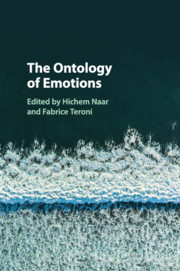Book contents
- The Ontology of Emotions
- The Ontology of Emotions
- Copyright page
- Contents
- Contributors
- Introduction
- Chapter 1 Mind-Body Theories and the Emotions
- Chapter 2 Dispositionality and Mentality
- Chapter 3 Emotion as Process
- Chapter 4 The Ontology of Emotion
- Chapter 5 Phenomenal Commitments: A Puzzle for Experiential Theories of Emotion
- Chapter 6 An Enactivist Theory of Emotional Content
- Chapter 7 The Perceptibility of Emotion
- Chapter 8 Sentiments
- Chapter 9 The Metaphysics of Moods
- Chapter 10 Night Fight
- Bibliography
- Index
- References
Bibliography
Published online by Cambridge University Press: 18 December 2017
- The Ontology of Emotions
- The Ontology of Emotions
- Copyright page
- Contents
- Contributors
- Introduction
- Chapter 1 Mind-Body Theories and the Emotions
- Chapter 2 Dispositionality and Mentality
- Chapter 3 Emotion as Process
- Chapter 4 The Ontology of Emotion
- Chapter 5 Phenomenal Commitments: A Puzzle for Experiential Theories of Emotion
- Chapter 6 An Enactivist Theory of Emotional Content
- Chapter 7 The Perceptibility of Emotion
- Chapter 8 Sentiments
- Chapter 9 The Metaphysics of Moods
- Chapter 10 Night Fight
- Bibliography
- Index
- References
Summary

- Type
- Chapter
- Information
- The Ontology of Emotions , pp. 209 - 224Publisher: Cambridge University PressPrint publication year: 2017

